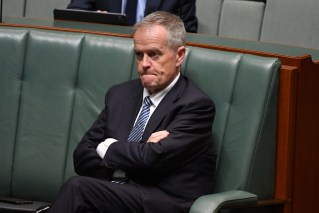Boardrooms are open but women still missing out on CEO roles
Women were making it to the boardroom of Australia’s top companies but were still being locked out of chief executive positions.


Women were being locked out of leadership roles
A survey by Chief Executive Women found only 6 per cent of the Australia’s top 300 public companies had a woman as a chief executive. That meant just 18 women were in leadership roles of companies on the index.
Only one woman was appointed to a chief executive role of an ASX300 company in 2021, the survey found.
CEW said it would take 65 years, or until 2086, before women made up 40 per cent of line roles in executive leadership teams, based on CEW Census trends from the last five years.
And the number of women in leadership teams had stalled in the past five years. The survey found about 25 per cent of executive leadership roles went to women.
However, a report last month from the Governance Institute of Australia showed the number of women on the boards of the 300 largest Australian-listed companies had surged by 60 per cent in five years.
Of 2000 board seats across the companies, 633 are occupied by women. In 2016, 399 board seats were occupied by women. Boards with no women decreased from 59 in 2016 to just 14 in 2021.
Chief Executive Women president Sam Mostyn said gender targets were needed to improve the number of women in executive leadership roles.
She said Australia needed the full depth of talent available to it by setting gender balance targets for executive leadership roles to give the country the best economic recovery from the pandemic.
“These results are a wake-up call to Australia’s business leaders, political leaders and investors – now is the time for action. Setting gender balance targets for executive leadership teams, with a specific focus on roles with profit and loss responsibilities together with a commitment to developing the pipeline for those roles, will ensure women are represented at critical decision-making tables,’’ Mostyn said.
“The CEW Census data consistently and disappointingly shows us that without intentional action by leaders for executive leadership teams, change simply hasn’t happened. That’s why it’s now time for targets.
“We know gender-balanced organisations perform better. It is notable that the top performing companies, the ASX50, have greater representation of women in senior roles. They show us that gender balance is achievable.’’
The survey also found that only one out of 23 CEO appointments in the ASX300 in the 2021 reporting period was a woman.
Women now made up a quarter of the roles on executive leadership teams – a figure CEW Census data shows has stalled in recent years.
“We believe that targets can be transformative, if they can be tracked and leaders are accountable for delivering them. Investors are also increasingly demanding greater gender balance and we believe targets are part of this story,” Ms Mostyn said.
“As we continue to navigate the impacts of the COVID-19 pandemic, Australia must use all of its available resources. Australian women are the most educated in the world, but CEW Census data shows we’re not making the most of their talent and our investment in their education and career development. Maximising how we make use of women in the workforce and in leadership positions is a lever we can pull right now to help Australia prosper post-COVID,” Mostyn said.












